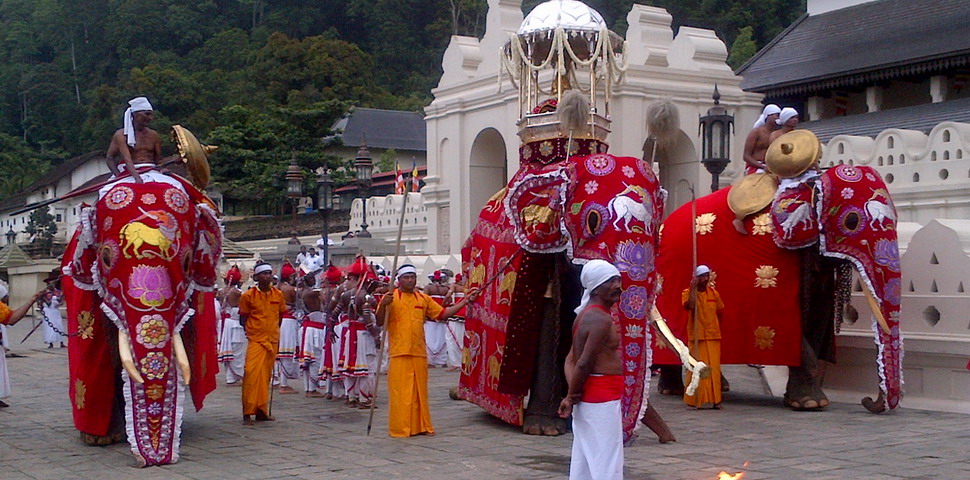The Festival of the Sacred Tooth
The “Esala Perahera” Festival of the Sacred Tooth is one of the oldest and biggest of all Buddha festivals, involving dancers, jugglers, musicians, fire eaters and lavishly ornamented elephants. The date of the ten day festivity is determined by the lunar calendar and is usually in July or August. This marks the end of the dry season and the beginning of rain. Elephants play an important role in the Festival of the Sacred Tooth because they symbolise rainy clouds that gather before it starts raining. Today the festival is rather a national holiday than a religious festivity, and it celebrates a tooth of Buddha.
Tradition has it that emperor Ashoka, who ruled in India in 3rd century B.C., was supposed to distribute the relics that had remained after Buddha’s cremation. Today, the relics are to be found in various temples scattered all around Asia. One of the most sacred temples is most certainly the Temple of the Sacred Tooth in Kandy, Sri Lanka, where one of the four Buddha’s canines is housed. Buddhists keep this canine as a human being, offering it food and drink every day in the morning, at noon and in the evening.
Kandy was the capital of the Kingdom of Sri Lanka, which was abolished in 1815 when the British overthrew the last king Sri Vikram Rajasing. It was then that Colombo became the capital. However, Kandy is still well known for the cultural festival “Esala Perahera”. On that occasion Buddha’s sacred tooth is carried through the streets of Kandy in a golden casket on an elephant’s back. Buddhists believe that its magic power invokes rain.
The annual Esala Perahera festivity is held for ten nights in succession, ending in the morning preceding the night of full moon.
